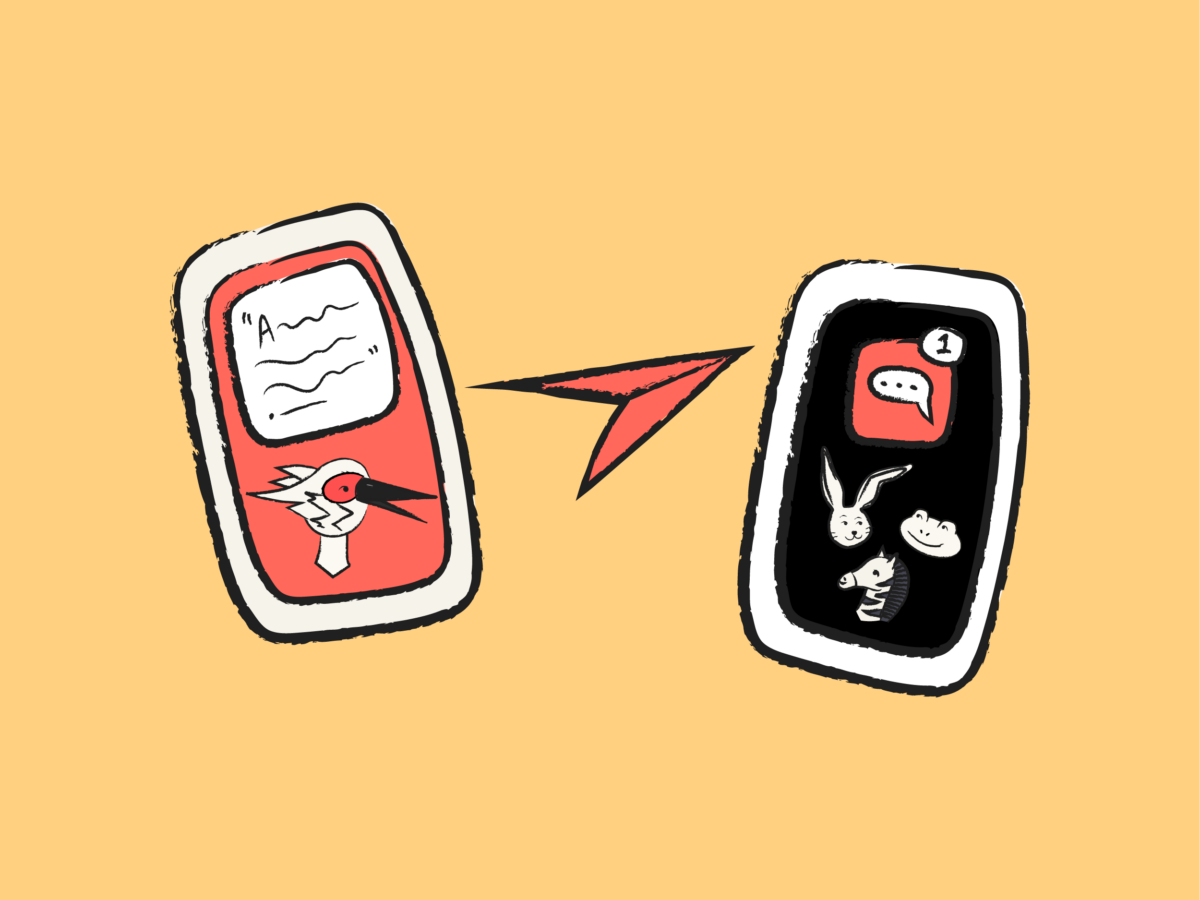Your job as a digital marketer requires you to wear many hats. You don’t just spend all day on social media. You have to create email newsletters, study analytics to see how your posts perform and keep up with the latest SEO trends.
It’s a lot. You know that. Luckily automating some of your marketing tasks will put data to work and streamline a significant chunk of your workflows.
“But automation will make my content seem robotic and fake!”

Yeah, if you decide to automate sharing your most recent blog post, it certainly will seem a bit robotic. But don’t worry, we’ll focus on automating tasks that will save you time.
Time that can be spent humanizing your brand and creating more genuine content that your target audience will find relevant and engaging.
Whether you’re part of a large marketing department or just a one-person team for a small business, marketing automation can help increase efficiency, enabling you to put more into making your brand appear more human.
Why should my brand appear human?
Well, humans need to engage with other humans. We understand that more than ever in this (hopefully) post-lockdown era.
But it’s not just limited to interactions between people. It includes brands as well.
That means you can’t just say, “Hey, buy our new product, it’s really cool!” anymore. Your audience wants to feel listened to and understood. They want to feel like there are real humans behind your brand.

Take our blog, for example. Sure, at its core, it’s content marketing. But it’s written conversationally and casually to make it easier to digest and more relatable – don’t you think?
Surprisingly, you can learn a lot from Star Trek and Mean Girls when it comes to creating relatable content.
Today we’re going to focus on the following marketing tasks and how automating them will allow your brand to feel more human:
- Social media post scheduling
- Task assignment
- Email marketing
- Search engine keyword research
- CRM
- Dynamic content
Social media post scheduling
Don’t worry, we’re not saying you should automate the creation of your social media posts. AI might have come a long way, but it still can’t replace humans when it comes to creating unique long-form content.

But automation can help in every other aspect of your social media activity.
Your content calendar needs to be full, but scheduling all your posts manually takes up a big chunk of your day, and it’s not the most exciting task. Step forward, automation.
Many scheduling platforms are available, such as Buffer and Hootsuite. And they can all streamline your social media marketing process, freeing up time for you to create more engaging and human content.
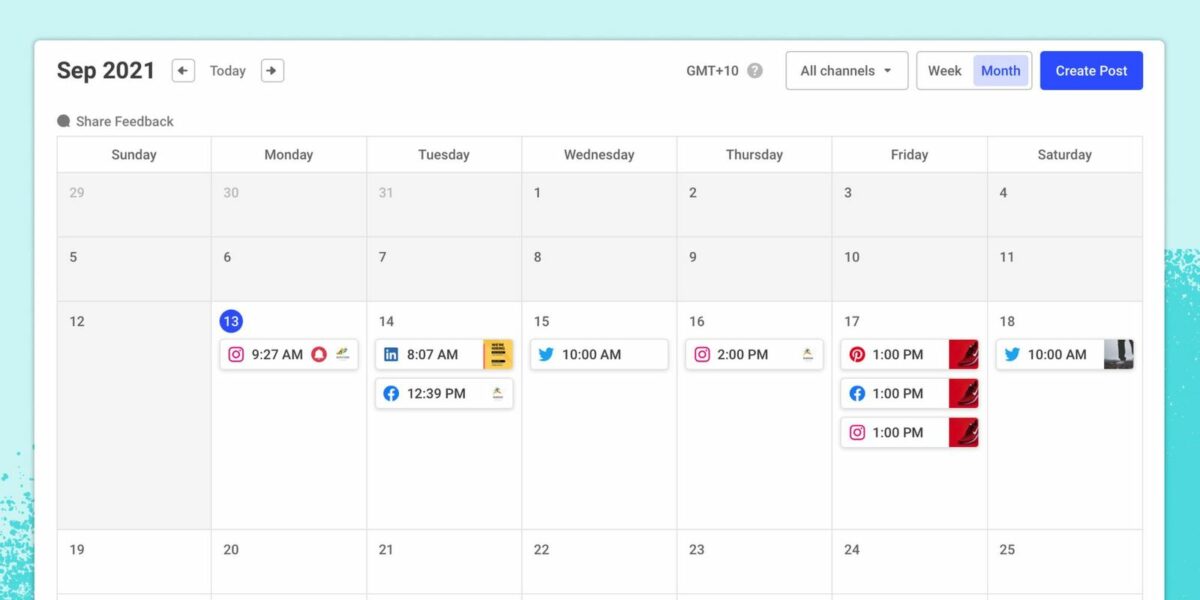
Both Buffer and Hootsuite can analyze your output and figure out what gets the most engagement from your users. No more looking at graphs and pie charts, trying to figure out how your posts performed. They’ll do it for you.
Not only that, but they can also figure out when is best to publish your content. If videos on Twitter work best on a Friday afternoon, they’ll automatically schedule them for then. Now you’ve got a full content calendar, and you didn’t have to do a thing.
You’ll have much more time to create the posts and give them that human touch. And your software will ensure they reach your target market. Sounds like a pretty sweet deal to me.
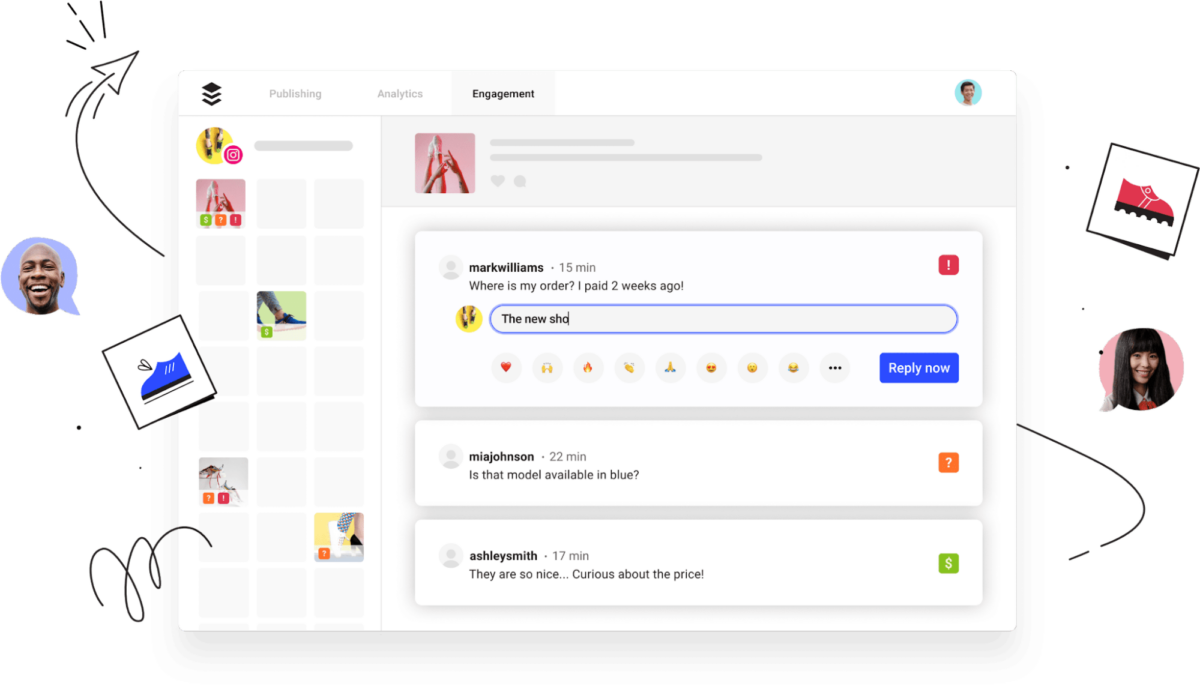
These platforms can also help keep you on top of conversations and questions across social media. Buffer, for example, can categorize all comments into questions, negative sentiments, and comments. This means you’re always up to date with the conversation surrounding your brand and able to follow up quickly on the most pressing matters.
If you can consistently engage in conversation and solve any problems your customers may have, it will show that you care. It’s only a small detail, but your audience will feel like they’re being listened to.
Task assignment
If you’re part of a large marketing team, automating your task management can save a lot of time. There’s a plethora of management software to choose from, but the ones that can automate your tasks for you are the ones that will help the most.
If you have team members all around the globe, you can automate your project management to ensure colleagues in certain locations or time zones get the work that is specific to them.

Do you waste precious minutes every week assigning market research tasks to the same team members? With automated task management, they can be assigned every week without you lifting a finger.
You’ll still have to update and manage certain tasks manually, but those recurring jobs, you know, the ones you tire of inputting every week? They can be automated. And you can crack on creating more human-like marketing materials.
Email marketing
Automating parts of your email campaigns has been simple for quite a while now, but it goes far beyond just adding the customer’s <First Name> to the beginning of each newsletter you send.
Personalization in marketing has been shown to improve revenue growth compared to companies that don’t use it. So use some of the great platforms out there, such as MailChimp, to make your customers feel like you know what they want.

As part of the marketing department, you have a wealth of customer data at your fingertips. This can be used to add even more personalization to your email campaigns via segmentation.
This is the organization of your email subscribers into smaller segments based on certain criteria. Depending on your business, users can be organized in many different ways, such as location, interests, and purchase history.
If you’re an international business, it’s no use sending an email campaign to European subscribers with pricing in dollars. Likewise, asking new customers who have only just subscribed to your newsletter for a product review will clearly be automated and out of touch.
Segmentation is a great start, but you can use behavioral targeting to truly make your email campaigns unique for each individual.
Behavioral targeting
Digital marketing is a busy place. There’s a lot going on and heaps of data for you to work with. Behavioral targeting can help focus your marketing plan, so your customers feel listened to. Then you’re more likely to get conversions.
It works by using your consumers’ activities to find the messages that will be most effective for them.

For email marketing, we can organize these via:
- Purchase history
- Campaign engagement
Purchase history
This represents a valuable and helpful data set for your marketing strategy. You can use a customer’s purchase history to target them with specific messaging or campaigns you know they are interested in.

For example, I recently purchased a baby hiking carrier from a large outdoor retailer. I have an account with them, so they know everything I’ve ever bought.
Since the purchase, I’ve only received a single generic email offer with no personalization. The company could have used my purchase history to advertise baby waterproof hiking suits. Or any products for small humans.
If they wanted to go even further, they could send me age-specific emails yearly as my child grows and needs new clothes and hiking equipment.
I would have felt like the retailer understood my needs if I had received a personalized email. That’s how all customers want to feel. Instead, I felt talked at. Not listened to.
If a customer has canceled a subscription, you can automate an email campaign to follow-up with them several months later. Something like: “Hey, we know money is tight for a lot of people right now, so here’s a discount code. We’d love to have you back.”
Automating that email gives you the time to create a message which has empathy and humanizes your brand.
Campaign engagement
This is a great way to fine-tune the personalization of your emails for users.
You can monitor which sections of emails are being clicked on and who is and isn’t reading them. You can send reminder emails to those who didn’t open your most recent newsletter or send more of the content that gets the most engagement.

Fine-tuning your email campaigns can make a big difference in how customers feel about your brand. If a customer regularly receives emails containing only information they find interesting, it begins to feel like a real conversation, not just marketing.
Search engine keyword research
Let’s say you’ve got to create the latest blog for your brand. It has to do two things:
- Engage your audience and solve a pain point
- Rank well on Google
How much time do you spend researching which keywords to include for a single blog? And how much do you spend writing it?
You probably spend a lot longer on keyword research than you realize.
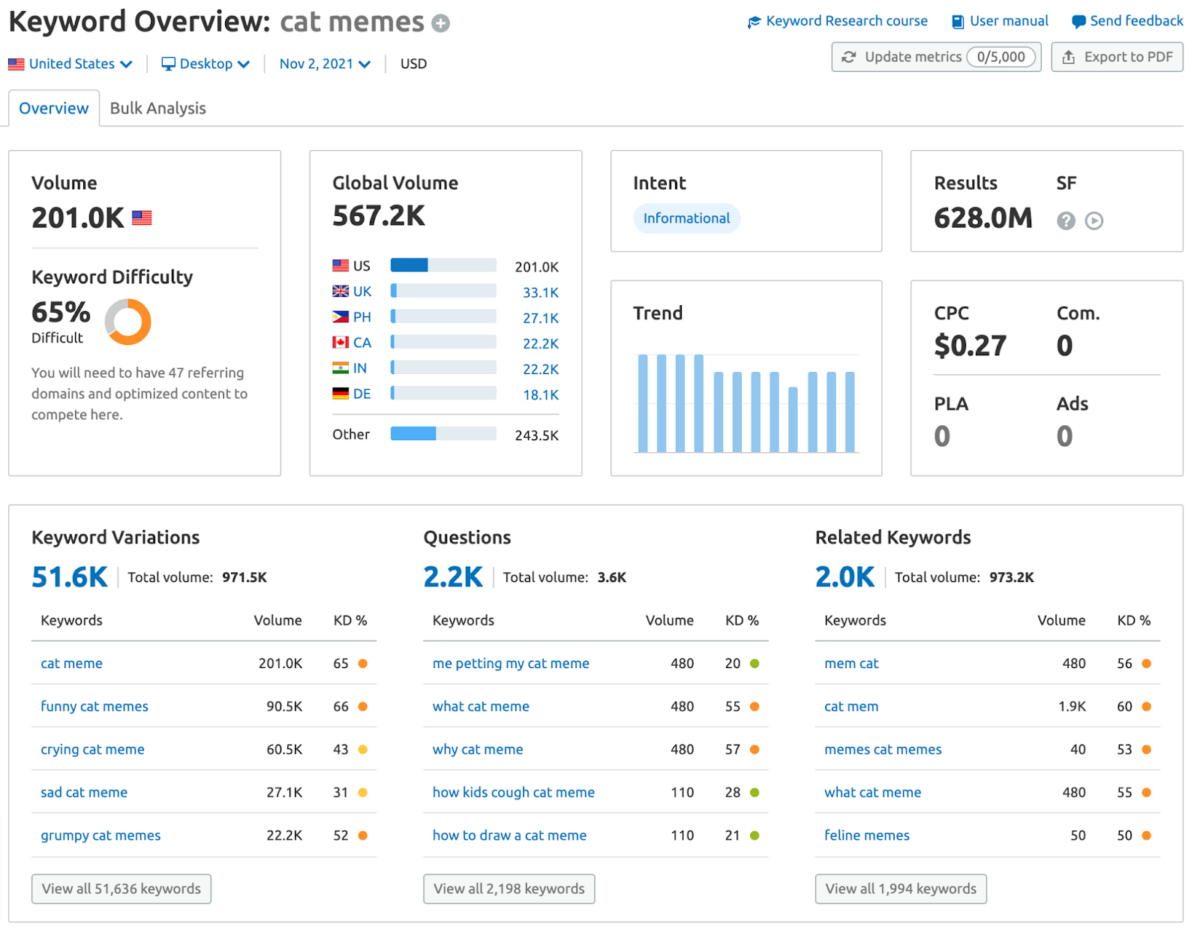
Instead, why not set up automatic tools to do the research for your latest creation? You’ve just saved yourself loads of time, which you can now put into creating a blog post that your customers will engage with.
There are lots of SEO keyword tools that you can use to free up time to get your creative juices flowing.
Clearscope uses machine learning to analyze the top search results for your given search term. It then supplies you with a list of related terms to help your blog appear on the first SERP. You have to input one search term, and Clearscope does the rest. It even lets you know how well you’re integrating the suggested terms into your writing.

Ubersuggest and Semrush can also automate your keyword research, with both pieces of software also suggesting related terms that will help boost your rankings.
Ubersuggest will also give you related keywords and frequently asked questions. Semrush enables you to get an overview of your competitors and how their keywords are performing.
Using tools such as those listed above will free up a huge amount of time each week for you to communicate in a human way with your audience. You can think deeply about how your content can best serve your customers and solve their pain points without them feeling they’re being marketed to. Remember, keep the tone conversational, and write how people talk.
CRM
Okay, up until this point, you’ve been using your CRM to collect all your customer data. But once you have all that information, you’ve been going through it manually. Then trying to figure out how to communicate with each customer via your various marketing campaigns.
Sure, it works, but it could be better. And a lot quicker.
A good CRM can automate many processes that would otherwise eat into your day. These include email drip campaigns, welcome emails, and segmentation.
Gone are the days when you had to wait for notifications from your CRM before manually sending an email yourself.
Once you start to automate your CRM, you’ll have way more time to create content that humanizes your brand and increases engagement and trust with your audience.

One excellent way to communicate with your audience in a human way is to ask questions. That’s how we communicate, right?
You can use your CRM to automate this when your customers perform a certain action. For example, when a customer buys a product, you can send an email or message via social media a week or two later, asking what they think of the product.
Your customers feel listened to, and if they respond, you get feedback on your product and a review on the product page.
Dynamic content
Dynamic content is a great way to offer a personalized experience to your users and should be something you’re practicing if you’re in eCommerce.
In a nutshell, these are components of a website, email, or app that change depending on the actions and preferences of the user.
Head over to Amazon now, and you’ll be greeted with the products you were last looking at and perishable items that you might be running low on.
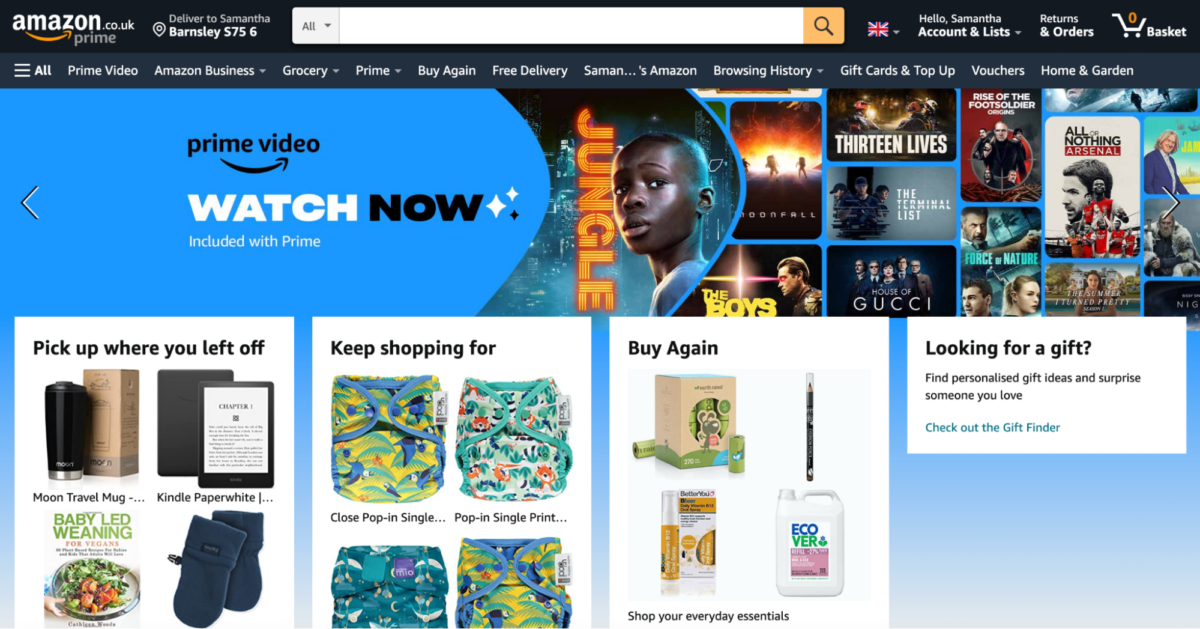
Dynamic content isn’t just restricted to your website. It can be used in your email marketing too.
If you have a section in your monthly newsletter with the title “We Think You’ll Really Like This,” you can use customer data and dynamic content to ensure the content in that section is relevant to each customer.
There’s no point putting the same piece of content in that space for your thousands of readers. They’re all unique. And your email campaigns should be too.
Let automation do the heavy lifting
Automating your marketing activities has two goals:
- Save you and your marketing team time, which in turn allows you to…
- Create a personalized and more human experience for customers
Artificial Intelligence might be good, but it’s not yet at the stage where it can consistently interact with us in a human way. Thankfully, AI and computers are good at completing the tasks that take a while and, more often than not, are pretty dull.
Using automated marketing tools to support your output ensures you get the most up to date information on your customers and grants you the extra time to have human conversations with them.
Many of the tasks mentioned above might be small, but they all add up. Automate the above processes and watch your to-do list shrink and your content become more human.


